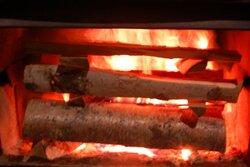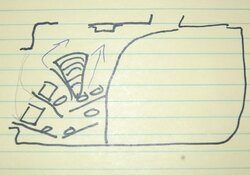Fresh data point for
@BKVP, not sure if he subscribes to the Fairbanks newspaper, troubling article this morning.
I have a fresh combustor with maybe a half dozen burns on it.
I am sitting on eight cords for this season, pretty evenly distributed between 11-15% MC, I am calling it 13% average, with confidence.
I have some practice on regulated cold starts.
1941 Kindling ignition .
1945 First puff out of the stack at 50% opacity (not certified), closed loading door to cracked open.
1946 plume at 50% opacity, closed the loading door, fuel 50% charred, stack temp 200dF, probe at Inactive, first letter i.
1950 iNactive, door cracked
1953 door closed, 80% char, 400 dF flue, inaCtive, attached plume at 50% or greater
1959 inacTive, 100% char, flue gas 400dF, 50% or greater opacity attached
2000 inactIve, engaged, prompt glowing cat, 450 dF flue gas
2001 clean plume
16 minute cold start to the inspector on the street. Once my new combustor settles in I think another 3-5 minutes to clean plume on cold starts is reasonable and unavoidable I wouldn't want to describe myself has a has been drip under pressure, (ex-spurt), but getting a 20 minute cold start with fuel at 20% MC and less than three years of practice is not within the realm of likelihood for the general population.




